Sunday 8 Nov 2020 at 3 pm
Virtual Performance
Soundings: Camille Georgeson-Usher and Rachel Kiyo Iwaasa
-
Camille Georgeson-Usher
ArtistCamille Georgeson-Usher is Assistant Professor in the Department of Art History, Visual Art & Theory at UBC. She is a Coast Salish / Sahtu Dene / Scottish scholar, curator, and writer from Galiano Island, BC. Through her research, Usher is interested in the many ways in which peoples move together through space, how public art becomes a site for gathering, and intimacies with the everyday from an Indigenous perspective. She uses her practice as a long-distance runner as a methodology for embodied theory and an alternative form of sensing place. She is an award-winning writer whose work merges theory with poetry and at times, science-fiction; she has been published widely across academic books, magazines, arts journals, and exhibition texts. In addition to her academic work, she serves as Co-Chair of the Toronto Biennial of Art, is a Board Member of the Galiano Island Literary Festival, and sits on several advisories and committees across academia and the arts sector.
Read More
-
Rachel Kiyo Iwaasa
MusicianRachel Kiyo Iwaasa is recognized among Canada’s foremost contemporary music pianists. Selected to close the ISCM World New Music Days 2017 in Vancouver, Iwaasa has performed in the Netherlands, Germany, US and across Canada, with engagements including Muziekweek Gaudeamus, Music TORONTO, Music on Main, Vancouver New Music, Redshift, Western Front, Vancouver Symphony, Victoria Symphony, the Aventa Ensemble (Victoria), CONTACT contemporary music (Toronto), New Works Calgary, Groundswell New Music (Winnipeg) and Vancouver Pro Musica. Iwaasa is a co-founder of the Queer Arts Festival in Vancouver.
Read More
Camille Georgeson-Usher
through, in between oceans part 2, 2020
beaded installation
Collection of the artist
through, in between oceans part 2 by Camille Georgeson-Usher is a beaded installation, completed during the isolation of the Spring 2020 pandemic. The artist worked from home in Toronto, a departure from her intention to spend several months on Galiano Island, BC, where she was raised. This time had been set aside to spend time and learn with her family, and to allow the work to unfold as stories were shared. Instead, Georgeson-Usher improvised by fashioning a beadwork net to be viewed from below speaking to an awkwardness that searching for knowledge and learning often entails. The iridescent blue, green and sparingly used red beads shimmer overhead, their threads trailing off in space. Diamond-shaped absences are drawn in the air, the installation evoking the unfinished dialogue between generations of women separated by time and geography.
Rachel Kiyo Iwaasa, encountering the beadwork in the gallery, remarked on the Japanese Buddhist nenju, or prayer beads, and how she had learned that the set of nenju she inherited had sections missing. A shared experience of familial gaps, silences and ellipses informs Iwaasa’s interpretation of through, in between oceans part 2, developed in conversation with Georgeson-Usher and recorded at the School of Music’s Roy Barnett Hall on Sunday, November 8, 2020.
Camille Georgeson-Usher’s work is part of Soundings: An Exhibition in Five Parts at the Morris and Helen Belkin Art Gallery (September 8-December 6, 2020).
Photos: Rachel Topham Photography
Video: Aya Garcia
Rachel Kiyo Iwaasa performing Camille Georgeson-Usher’s through, in between oceans part 2 (2020)
Performed 8 November 2020
8 minutes, 28 seconds
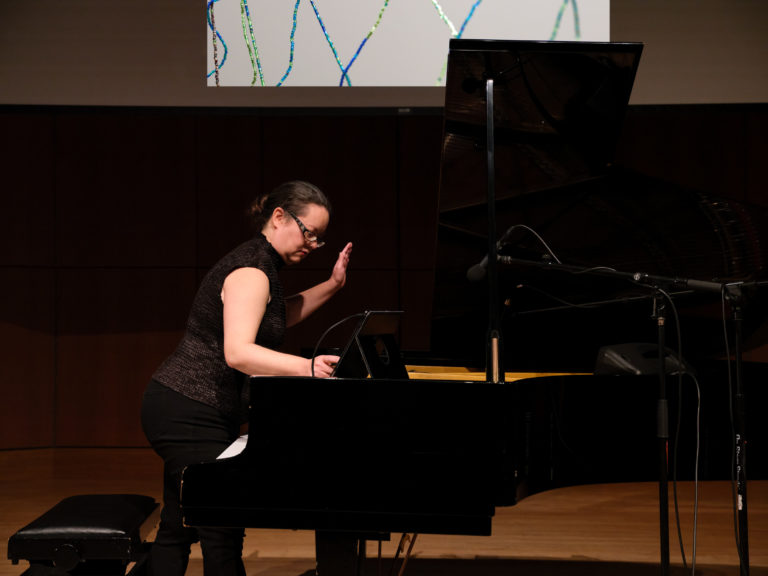
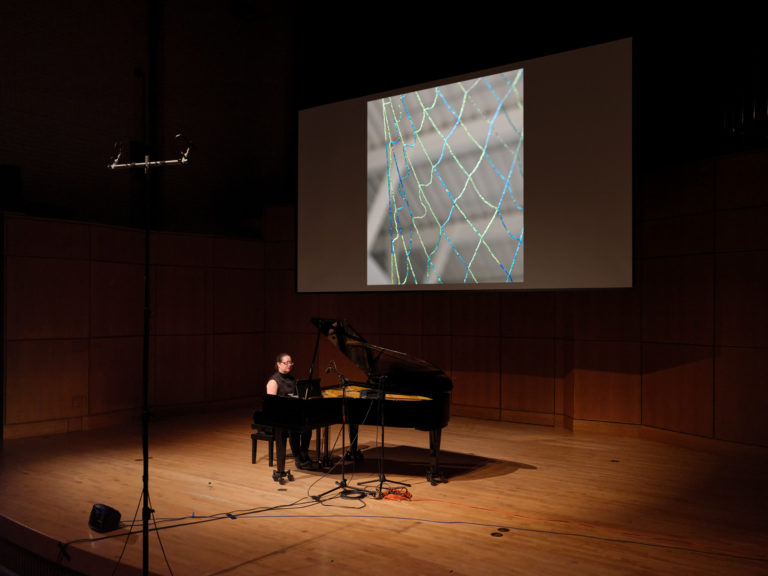
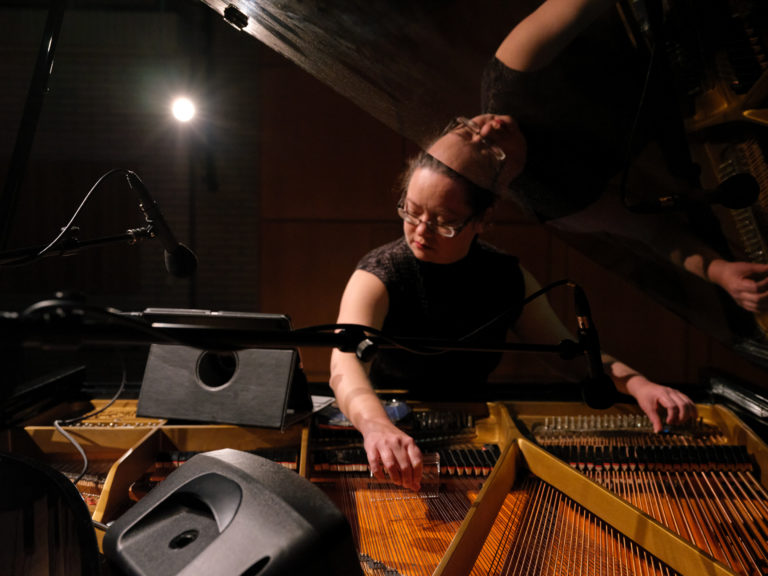
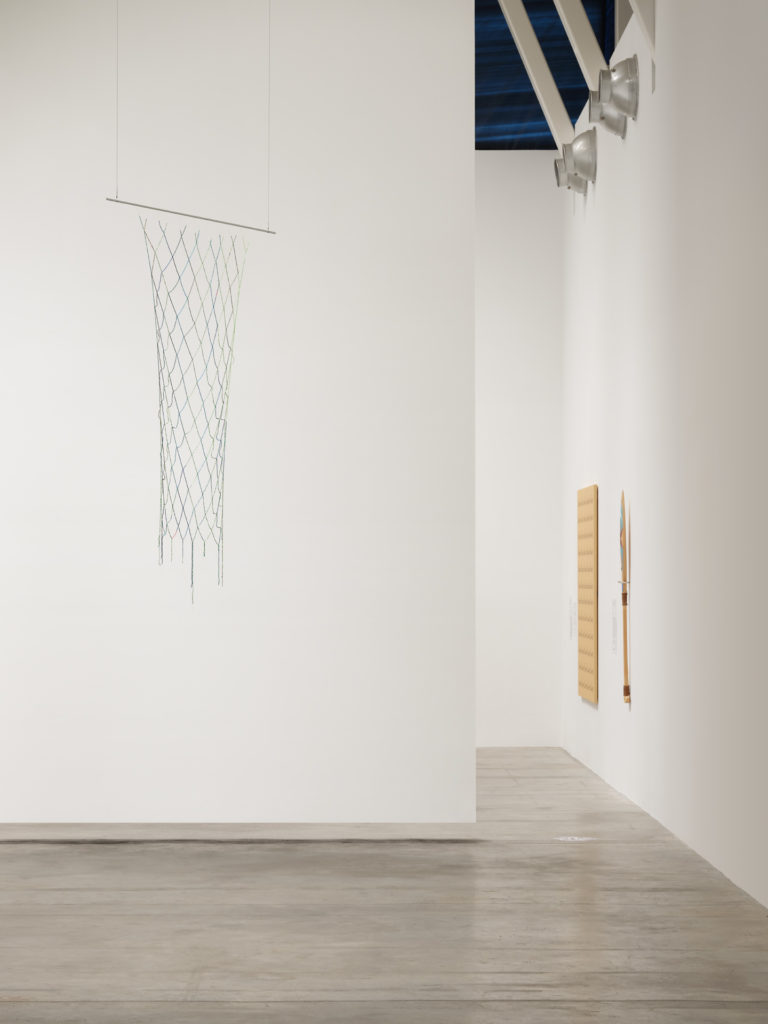
-
Camille Georgeson-Usher
ArtistCamille Georgeson-Usher is Assistant Professor in the Department of Art History, Visual Art & Theory at UBC. She is a Coast Salish / Sahtu Dene / Scottish scholar, curator, and writer from Galiano Island, BC. Through her research, Usher is interested in the many ways in which peoples move together through space, how public art becomes a site for gathering, and intimacies with the everyday from an Indigenous perspective. She uses her practice as a long-distance runner as a methodology for embodied theory and an alternative form of sensing place. She is an award-winning writer whose work merges theory with poetry and at times, science-fiction; she has been published widely across academic books, magazines, arts journals, and exhibition texts. In addition to her academic work, she serves as Co-Chair of the Toronto Biennial of Art, is a Board Member of the Galiano Island Literary Festival, and sits on several advisories and committees across academia and the arts sector.
Read More
-
Rachel Kiyo Iwaasa
MusicianRachel Kiyo Iwaasa is recognized among Canada’s foremost contemporary music pianists. Selected to close the ISCM World New Music Days 2017 in Vancouver, Iwaasa has performed in the Netherlands, Germany, US and across Canada, with engagements including Muziekweek Gaudeamus, Music TORONTO, Music on Main, Vancouver New Music, Redshift, Western Front, Vancouver Symphony, Victoria Symphony, the Aventa Ensemble (Victoria), CONTACT contemporary music (Toronto), New Works Calgary, Groundswell New Music (Winnipeg) and Vancouver Pro Musica. Iwaasa is a co-founder of the Queer Arts Festival in Vancouver.
Read More
Related
-
Exhibition
8 Sep – 6 Dec 2020
Soundings: An Exhibition in Five Parts
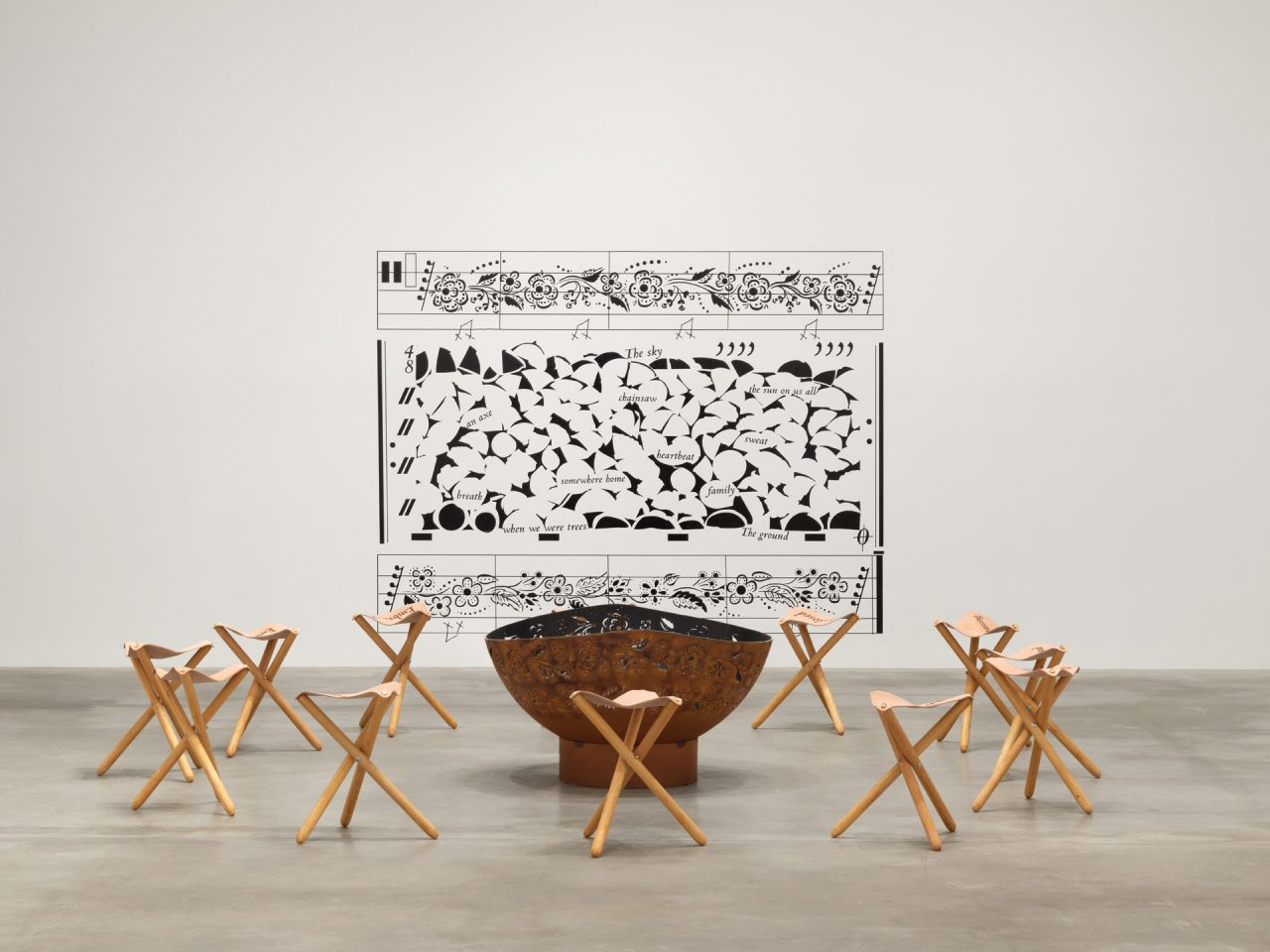
Soundings: An Exhibition in Five Parts features newly commissioned scores, performances, videos, sculptures and sound by Indigenous and other artists who respond to the question, How can a score be a call and tool for decolonization? Unfolding in a sequence of five parts, the scores take the form of beadwork, videos, objects, graphic notation, historical belongings and written instructions. During the exhibition, these scores are activated at specific moments by musicians, dancers, performers and members of the public, gradually filling the gallery and surrounding public spaces with sound and action. Curated by Candice Hopkins and Dylan Robinson, Soundings is cumulative, limning an ever-changing community of artworks, shared experience and engagement. Shifting and evolving, it gains new artists and players in each location. For this iteration on Musqueam territory, the Belkin has collaborated with UBC's Musqueam Language Program in partnership with the Musqueam Indian Band Language and Culture Department; School of Music; Chan Centre for Performing Arts; First Nations House of Learning and Museum of Anthropology to support the production of new artworks and performances by local artists.
[more] -
Event
10 Sep 2020
Soundings: Diamond Point and Coastal Wolf Pack
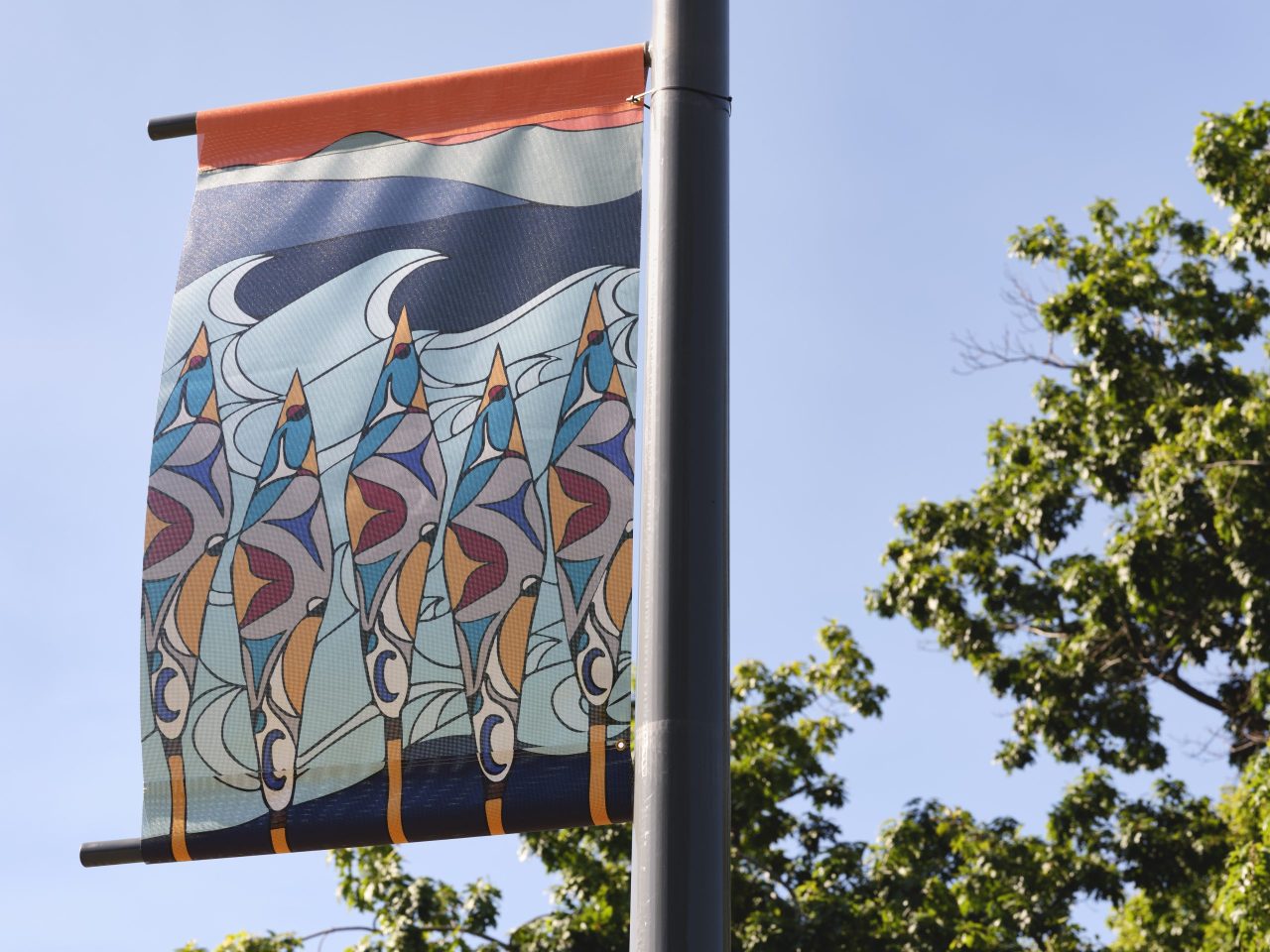
Forming two continuous lines on this part of the traditional, ancestral and unceded territory of the xʷməθkʷəy̓əm (Musqueam) people, wəɬ m̓i ct q̓pəθət tə ɬniməɬ by Diamond Point presents two images repeating in a sequence hung on the lampposts along UBC’s Main Mall from James Hart’s Reconciliation Pole to the plaza just beyond the Belkin.
[more] -
Event
Soundings: Germaine Koh
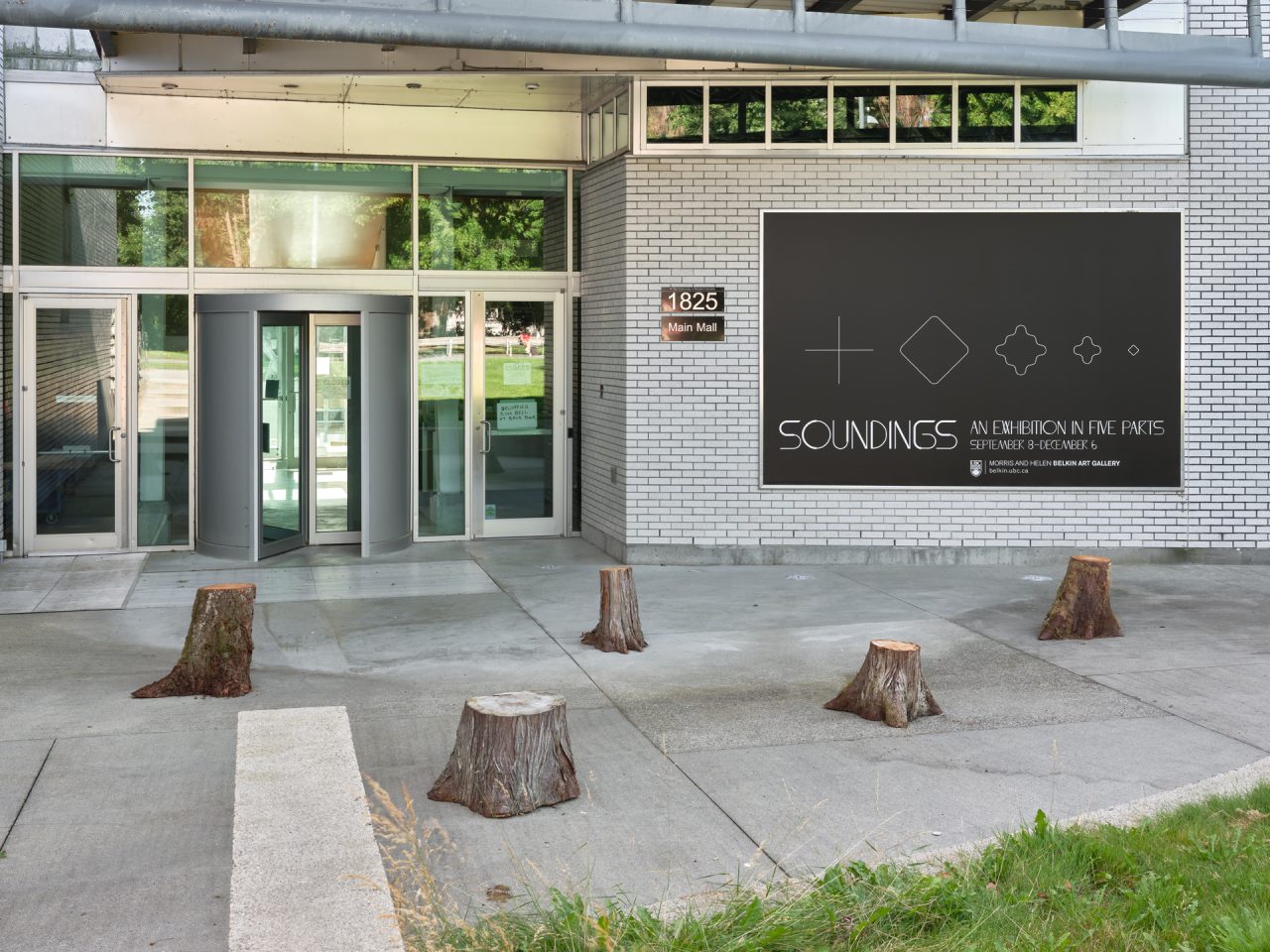
Germaine Koh’s drum is made from one of the cedar tree stumps she first brought to site for use as physical distancing stations. She worked with Belkin staff during Summer 2020 to develop COVID-19 safety and visitor interaction protocols that recognized the importance of collective care and teamwork.
[more] -
Event
Wednesday 21 Oct 2020 at 3 pm
Wednesday 28 Oct 2020 at 3 pm
Wednesday 25 Nov 2020 at 2 pm
Wednesday 2 Dec 2020 at 3 pm
Sunday 6 Dec 2020 at 3 pm
Soundings: Olivia Whetung and the Ladner Clock Tower Carillon
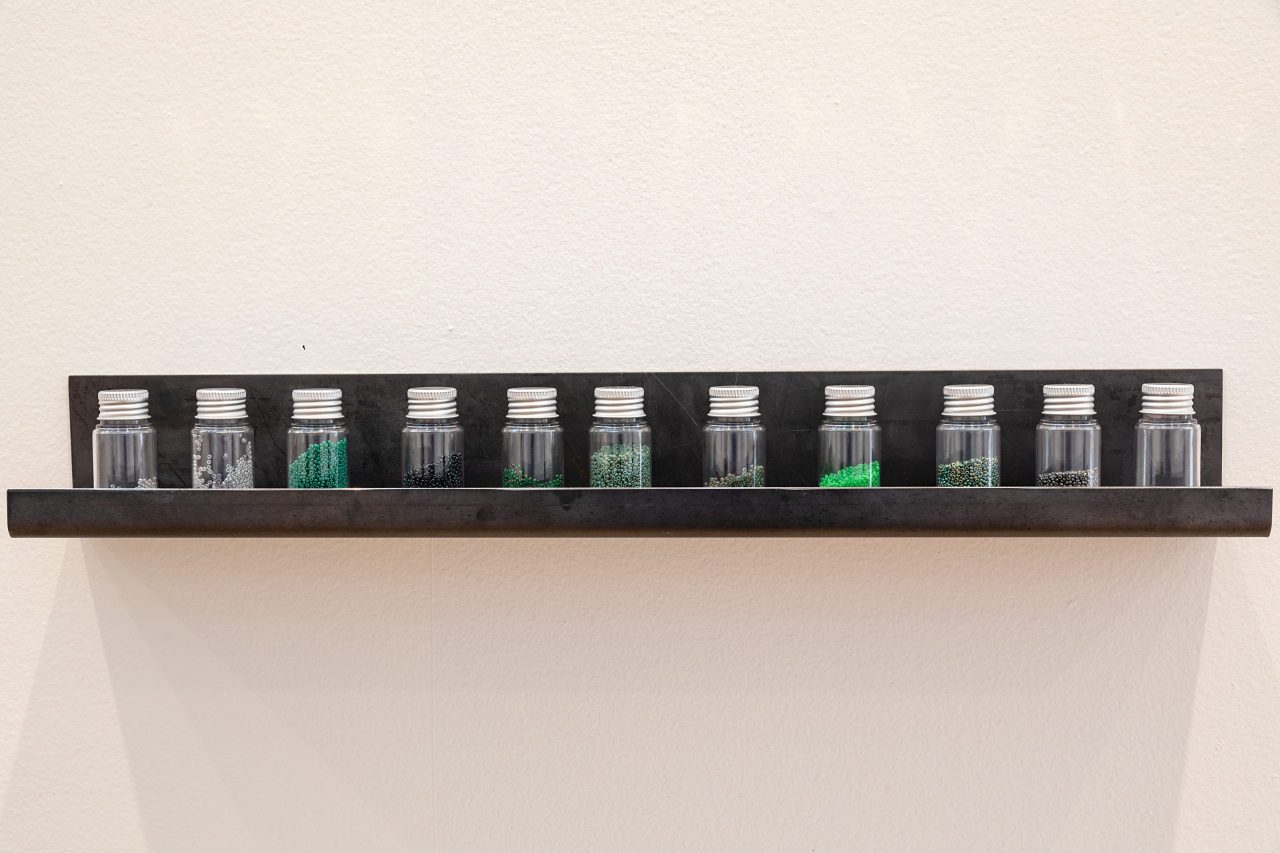
Whetung invites gallery visitors to pour different coloured beads from individual small jars into one large vessel, creating a layering of sounds as each bead joins the growing pile. Once the container is filled, the artist turns the amalgam of beads into an entirely new piece – a rectangular beadwork unique to the Belkin’s iteration of the exhibition.
[more] -
Event
8 Sep 2020
Soundings: Peter Morin and Parmela Attariwala

In Part One of NDN Love Songs, Peter Morin offers a score of instructions to musicians presented alongside seven video portraits. Part Two presents videos of recordings of previous iterations of the Soundings exhibition at Agnes Etherington Art Centre, Gund Gallery and Kitchener-Waterloo Art Gallery. In Part Three, Parmela Attariwala performs the score on the violin at the Belkin.
[more] -
Event
8 Oct 2020 at 4 pm
Soundings: Raven Chacon and Symphonic Wind Ensemble
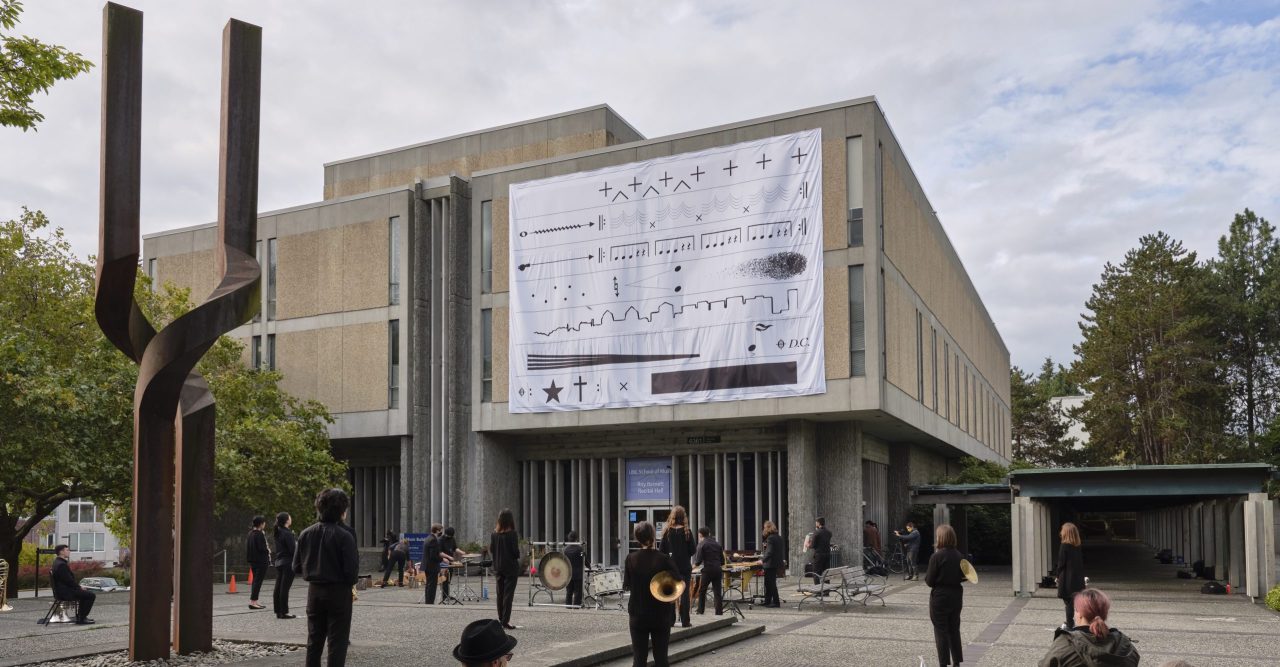
Around the corner from the Belkin Gallery, Raven Chacon's score American Ledger (No. 1) hangs on the exterior of the Music Building at 6361 Memorial Road, UBC. The score incorporates a traditional musical score with Navajo iconography and is to be performed by "many players with sustaining and percussive instruments, voices, coins, axe and wood, a police whistle and the striking of a match."
[more] -
News
31 Aug 2020
Soundings: Reading Room
The following is a list of resources related to Soundings: An Exhibition in Five Parts. The list of resources compiled here is not an official recommendation, but is rather a list of suggested readings compiled by Public Programs and graduate student researchers at the Belkin Art Gallery. These readings are intended to provide additional context for the exhibition and act as springboards for further research or questions stemming from the exhibition, artists, and works involved.
[more] -
News
30 Nov 2020
Belkin x CRWR: Soundings
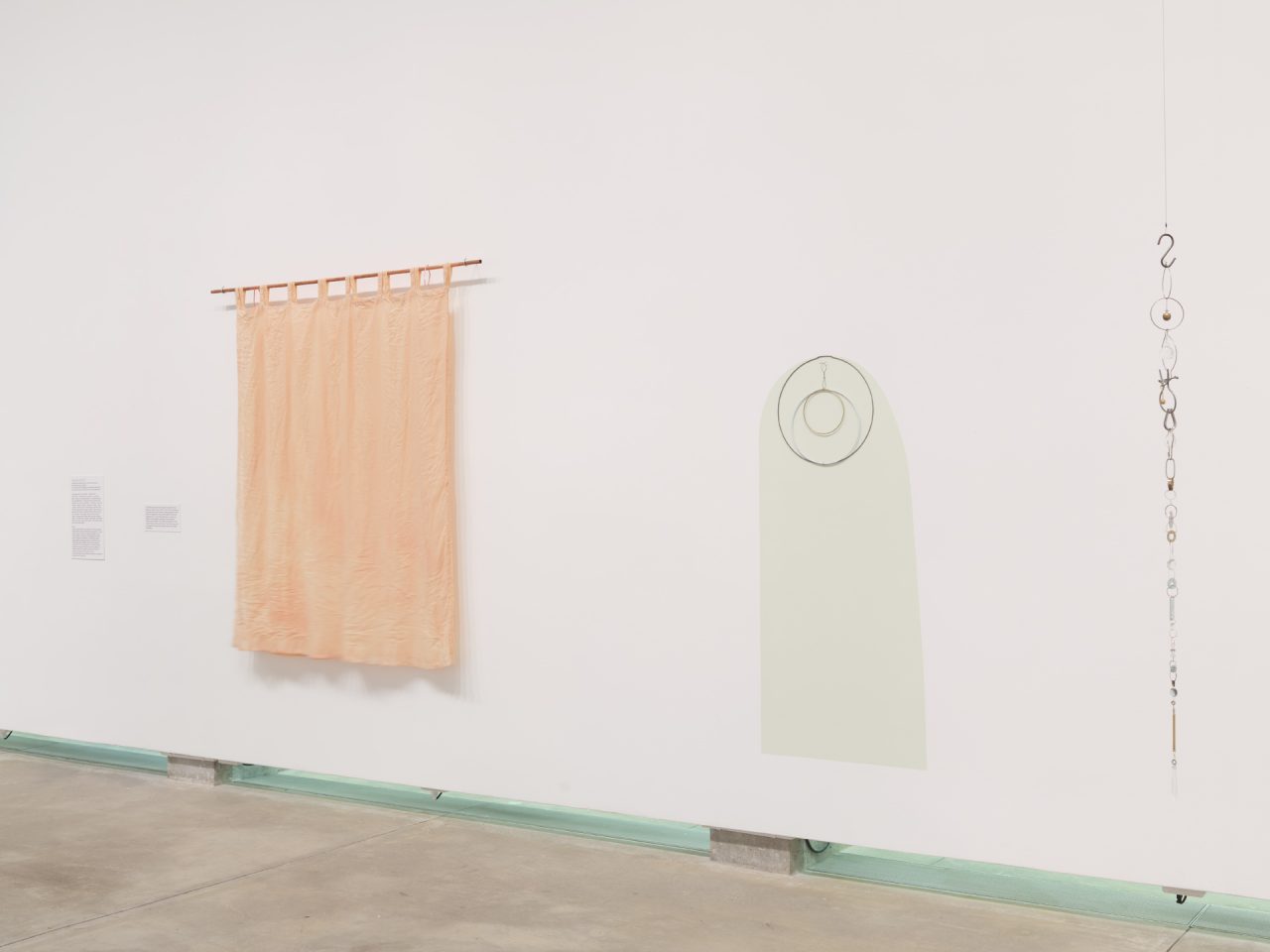
In response to Soundings: An Exhibition in Five Parts, a group of Creative Writing graduate students at the University of British Columbia have made a series of activities for visitors to take part in during their visits to the gallery. Thinking through the idea of a score as a call to respond, these activities range from sound walks to reflective worksheets to small group workshops.
[more] -
News
10 Dec 2020
Soundings: Marking Time
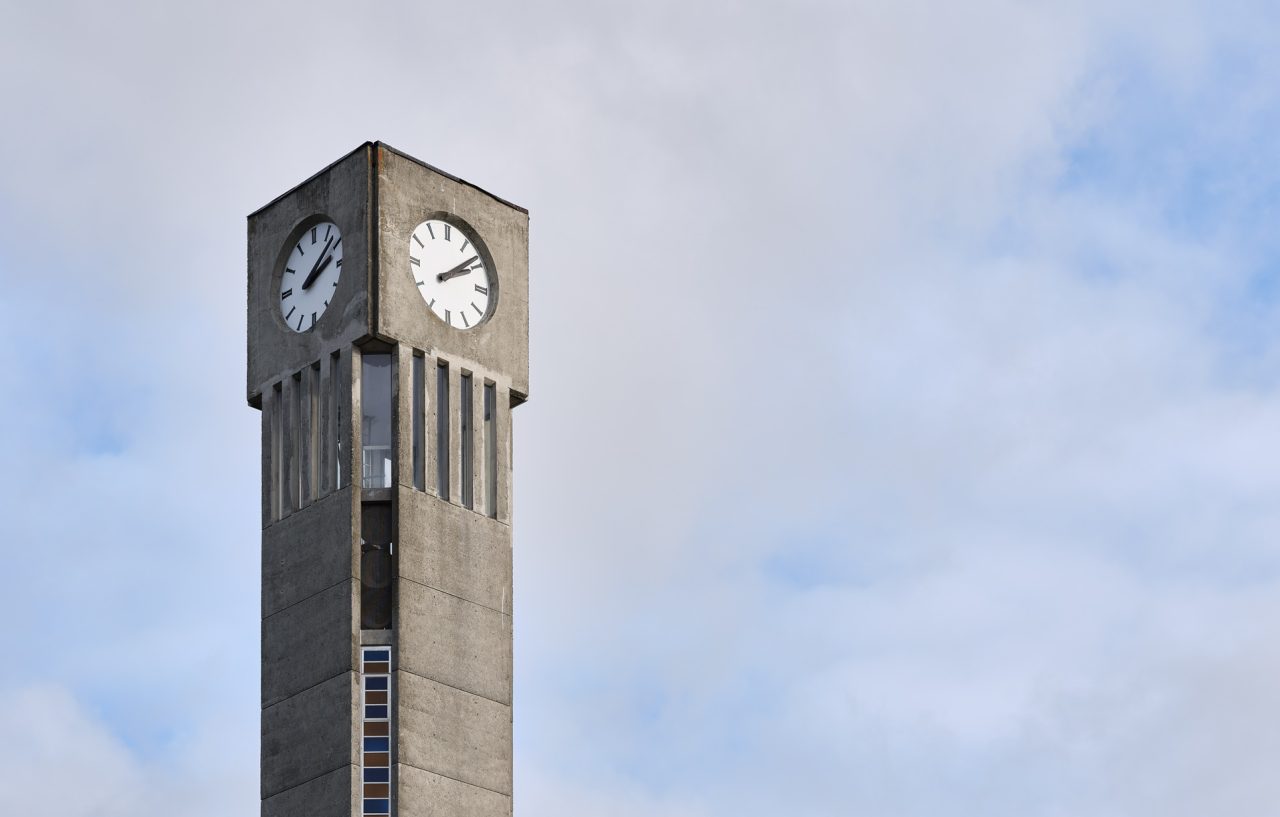 [more]
[more] -
Event
Sunday 8 Nov 2020 at 3 pm
Soundings: Camille Georgeson-Usher and Rachel Kiyo Iwaasa
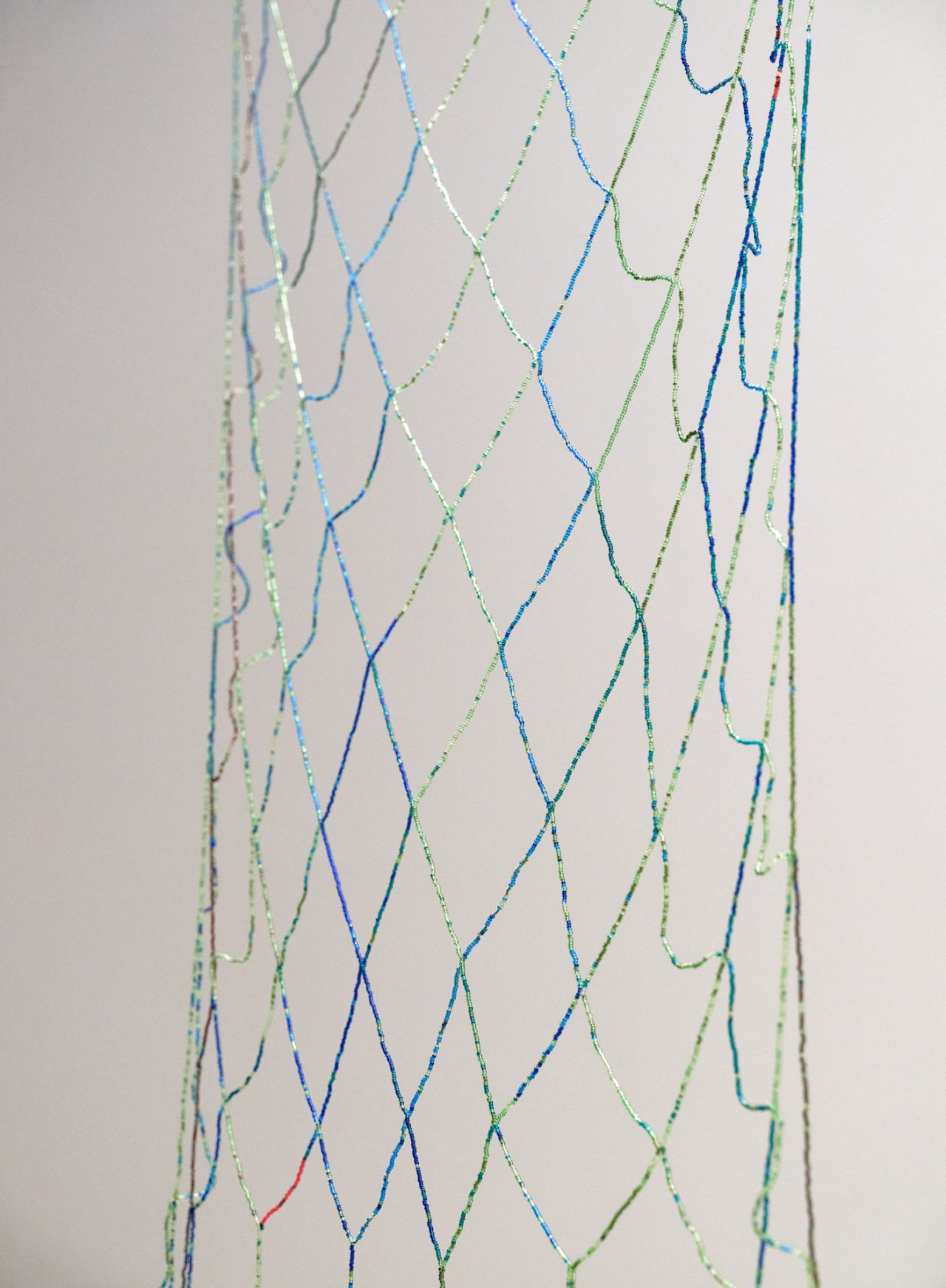
through, in between oceans part 2 by Camille Georgeson-Usher is a beaded installation, completed during the isolation of the Spring 2020 pandemic. The artist worked from home in Toronto, a departure from her intention to spend several months on Galiano Island, BC, where she was raised.
[more] -
Event
8 Sep 2020
Soundings: Greg Staats
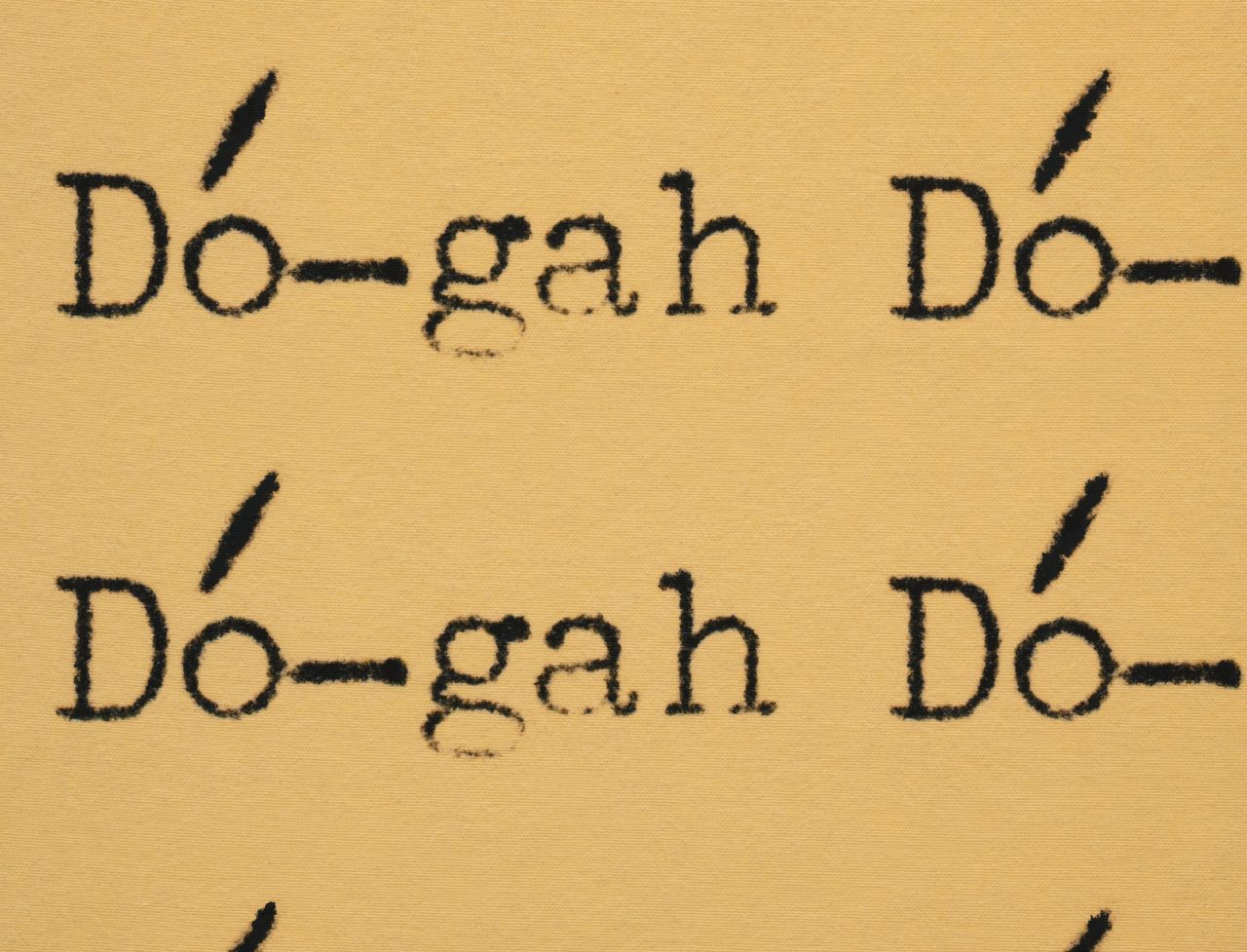 [more]
[more] -
Event
Monday 30 Nov 2020 at 4:30 pm
Soundings: Tania Willard and Melody Courage

Surrounded/Surrounding includes a wood-burning fire bowl, etched leather camp stools and a life-sized rendering of the artist’s wood pile in a graphic score. Written on the split logs and the spaces between them are references to the breathing, beating labour that creates what a fire needs, as well as the trees, sun, sky and ground that surrounds and creates all else.
[more] -
Event
Dec 2020
Soundings: UBC Contemporary Players Respond
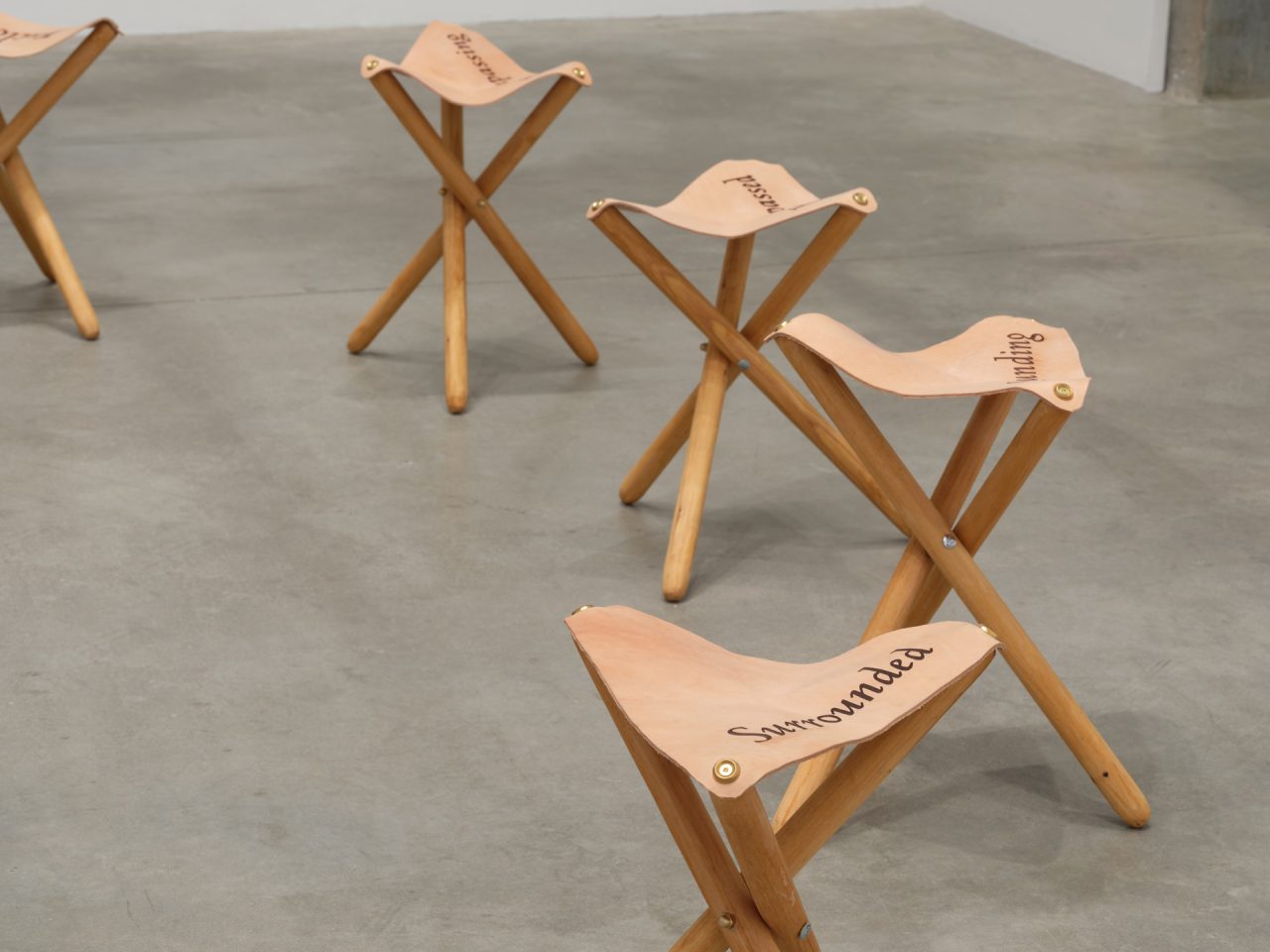
In lieu of a public concert at the Belkin as has occurred in recent years, musicians from UBC Contemporary Players chose a work by a Canadian composer to perform in an empty gallery, responding to the works of Soundings: An Exhibition in Five Parts. Videos of these performances are shared here for reference, research, and enjoyment in perpetuity. Soundings asks how a score can be a call and a tool for decolonization. The exhibition's corresponding investigations take at their centre questions of embodiment and subjectivity, of calls and responses. What are the practical matters of embodied decolonization, and how can we practice them? How does embodiment facilitate unlearning, unknowing, and the visioning of Indigenous ontologies?
[more]